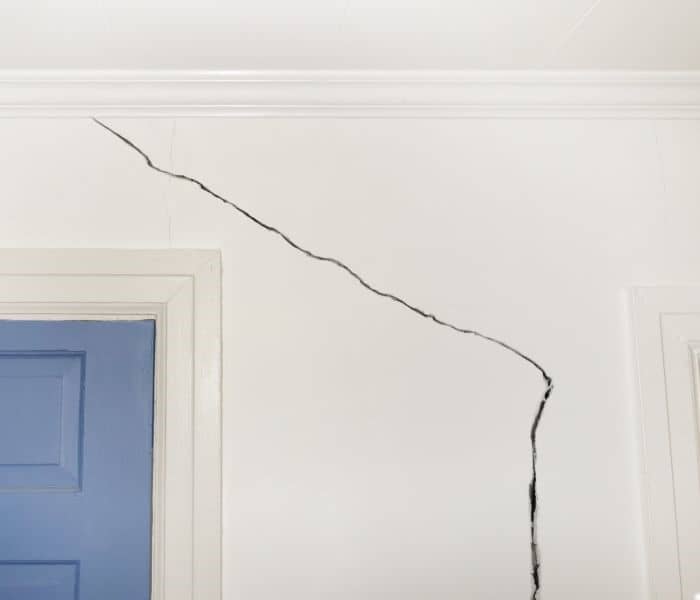Foundation crack repair for homes can be somewhat costly, depending on the extent of damage, foundation construction, and if your property needs added services such as waterproofing. Because of this cost and hassle, some homeowners might wonder if they should put off this work and if they should be worried if their home needs foundation crack patching and other repairs.
During construction repair, the process of concrete scanning reveals many things including map of structural steel, identify voids, and measurement of concrete slab thickness. There are plenty of common GPR scanning application:
- Roofs
- Walls
- Decks
- Floors
A foundation repair contractor is the best source of information when it comes to your property in particular, and how foundation damage might affect its overall structure. However, it’s good to consider some general information about foundation damage so you know when to call a repair company and why you should schedule those fixes quickly.
What happens when you neglect foundation crack repair?
There are many reasons why you should never neglect foundation crack repair in Cincinnati! Check out just a few of those reasons here and then discuss them with a foundation repair contractor as needed.
Cracks and other damage get worse over time
One vital reason to schedule those fixes quickly is that cracks tend to lengthen and deepen the longer they’re ignored. Needed repairs then get more extensive and costly the longer you put off calling a foundation repair company!
Property owners should also remember that foundation crack repair might cost just a few hundred dollars to fix if you address that damage early. Putting off those needed fixes and allowing those cracks to grow can then mean several hundred if not even a few thousand dollars in repair bills. To keep costs low, it’s vital that you address foundation cracks quickly.
The danger of moisture in the home
Foundation cracks also let moisture into a structure. Foundation concrete absorbs that moisture, expanding and putting pressure on the structure and itself, leading to even more cracks, chips, spalling, and softening.
Interior building materials also absorb that moisture, risking framing wood rot, damaged drywall, mold growth, mildew underneath carpeting, and loosened floor tile adhesive. Excess moisture also attracts insects and rodents and can result in unpleasant musty smells especially in basements and rooms with little air circulation.
What happens when a home starts to settle?
Over time, a damaged foundation can weaken so much that it cannot hold up the weight of a home or other structure. In turn, that structure might start to sink or settle along one side or the other. When a structure sinks along one side, it begins to pull on building materials that should be holding it together.
This settling and sinking can then create cracks along walls both inside and outside the structure. Your home might also suffer ceiling cracks, buckled floors, a crumbling chimney stack, and other such damage. It’s also not unusual for drywall nails to pop or drywall panels to pull away from each other, creating gaps, especially in room corners.
A sinking structure can also suffer roof cracks plumbing leaks and clogs. You might also notice that shelves and pictures never hang straight on the wall, creating an unsightly look and even letting items slide off your shelving!
What happens when foundation damage gets worse?
If your home needs foundation crack repair, you can typically schedule needed fixes and professional patching and caulking will seal off those cracks and gaps, keeping them from getting bigger. Foundation crack patching also blocks damaging moisture, protecting your home against wood rot and mold.
However, once foundation cracks get even more pronounced and your home starts to settle and sink, those needed repairs might become more complicated and more costly! For example, a weak foundation might need underpinning.
Underpinning uses steel pins or concrete piers inserted into the ground alongside or underneath the foundation. The foundation concrete is attached to those pins or piers by brackets along their top, as the structure is lifted into a proper position.
House leveling or slab jacking is often needed for a sunken structure. This process starts by drilling holes along a foundation, and a specialty slurry or grout is poured into those holes as the structure is lifted with heavy-duty hydraulic equipment. That slurry dries and hardens, keeping the structure in place and offering added support.
A pier and beam foundation might need added shimming. Shims are wedge-shaped pieces pounded between those piers and beams, lifting the structure and keeping it supported. Additional piers can also help support a structure after it’s settled.
Final words
While these repairs can often be costly, scheduling needed foundation crack repair at the first sign of damage can keep those costs low! A contractor can typically patch cracks, chips, and other such damage more quickly and affordably than a settled and sunken house. Rather than worrying about those needed repairs, schedule an inspection at the first sign of damage along your structure’s foundation.




